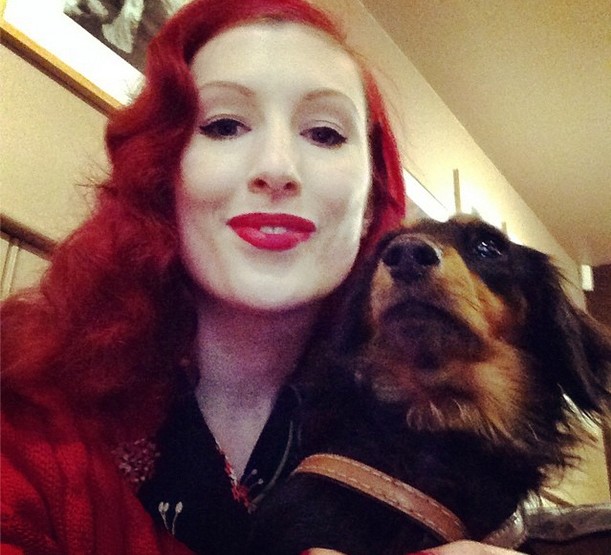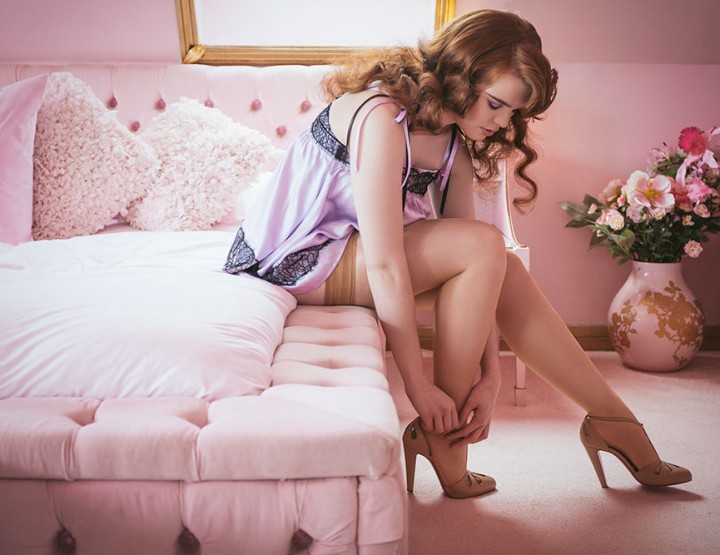Silk has long been the preferred fabric of Kings, Queens, Emperors, Tsars, the rich, the elite and Hollywood Starlets. Its long and labour intensive production method has always made it an expensive and exclusive fibre, once only worn by the very very rich. Just how is silk made and what makes it so expensive? Last week I visited Whitchurch Silk Mill in Hampshire (UK) to learn all about how silk is produced.
Silk is produced by silk worms. Their main habitat is in the far East and silk worms are a species which is now completely captive. The human want for their luxurious silk thread means that they have become completely reliant on humans, so now they only live in captivity. The worms, with a particularly picky diet of only fresh mulberry leaves, go through four stages to reach full development: The egg, the larva, the pupa and the adult. Unfortunately for the little silk worm, many never reach this final ‘adult’ stage. When in the pupa stage, the worm forms a cocoon of silk thread around itself. Each cocoon consists of a single thread of silk that when unravelled can be up to 1300 metres long! Getting the silk thread in one continuous length when unravelling the cocoon is one of the reasons silk is so expensive. Fibres that are continuous like this produce a much stronger silk thread, so care has to be taken in the unravelling process. That is why the silkworm will mostly never reach maturity; the action of chomping their way out of their cocoon using enzymes, breaks the continuous thread making the fibre much weaker and producing random lengths of thread.
And the time scale? The silk worm has a gestation period of around three weeks. Once hatched it takes approximately 20 – 25 days, or around a month, to grow to full maturity. Whilst growing, the worm eats anything up to 60 bin bags full of mulberry leaves. Any other food, or shortage of fresh mulberry leaves, can disrupt the delicate silk making process and result in an inferior silk. At this point they spin their cocoon, which takes about three days in total. So all in all it takes one little worm around 7 – 8 weeks in total to grow up and produce their precious silk cocoon, before the extraction process can begin. It is also worth pointing out that the silk worm being an insect is subject to a high mortality rate. Anything up to a half of the worms bred will die in infancy thus reducing the amount of worms that go on to produce a silk cocoon. This teamed with their fussy eating habits is one reason that silk is so expensive.
Assuming that the little silk worm has made it to the pupa stage, before unravelling can begin the moth is killed by either boiling or baking them. The tough outer layer of the cocoon is then softened by boiling so the silk thread is left behind. The end of the thread is found and wound onto a bobbin. Nowadays the unravelling process is done mechanically but before the mechanicalisation of the process, someone would have done it manually which was very time consuming, hence why only very wealthy people could afford silk in years gone by. Once the single thread has been obtained, 8 are spun together to make a much stronger yarn, as one on its own is too fragile. The silk fibres can then be woven into a silk fabric ready for use in the garment industry, as well as other texiles industries.
How many worms does it take to produce one garment? Well to produce 1kg of silk, 104kg of mulberry leaves are needed to be chomped by 3000 worms. Or another way to look at it, to make 10 silk blouses it would take more than 8, 000 silk worms eating over 350 pounds of mulberry leaves. That’s a lot of silk worms!
Now I hear you all shouting at your computer screens, what about the poor little silk wormie never living a full life and fulfilling its silk worm dreams?! Well nowadays you can also buy ethically made silk. I personally don’t have a problem with normal silk as I wear leather and eat meat, but for those of you out there who are interested, you can buy ethical silk. The silk unravelling process is done after the moth has emerged from its cocoon and care is taken to make sure that it has in fact left the cocoon before boiling the fibres. As we have heard though this produces a much weaker and shorter length fibre which affects the overall fabric strength. From my research ‘peace silk’, as it is known, doesn’t quite have the lustre of normally produced silk, but in many cases it can actually be a softer fabric. So there are pros and cons either way.
Whitchurch Silk Mill, Hampshire UK. Here the silk fibre bundles sent from the far East are being wound onto the bobbins ready for the weaving process to begin
Now we know about the laborious silk production method, we must now understand why it is so desirable as a fabric in the fashion industry and what makes it so magical. Did you know that silk is one of the most durable and strongest natural fibres around? We have already heard that the extraction method creates an incredibly long and strong fibre, but Wikipedia reliably informs me of its strength too:
“One example of the durable nature of silk over other fabrics is demonstrated by the recovery in 1840 of silk garments from a ship wreck of 1782: ‘The most durable article found has been silk; for besides pieces of cloaks and lace, a pair of black satin breeches, and a large satin waistcoat with flaps, were got up, of which the silk was perfect, but the lining entirely gone … from the thread giving way … No articles of dress of woollen cloth have yet been found.”
It’s strength is due to the molecular bonds of the silk fibre, which only strengthens when stretched. Not only this, but if you took a fibre of steel the same width as a silk thread, the silk thread would have the bigger tensile strength. It has probably evolved to be so strong so that the silkworm inside its cocoon is protected from predators whilst changing into a moth. Isn’t nature wonderful!
Another attractive quality of silk is its amazing lustre. The structure of the silk fibres, being a sort of triangular prism, means that the fibres reflect light at many different angles, giving that wonderful natural sheen. The texture the fibres have once woven is very soft and smooth making it nice to touch and giving it that desirable drape fashion designers are so fond of.
Apart from aesthetic and texturally pleasing qualities, silk has what I like to think of as magical qualities. Its light as air texture and excellent absorbency makes it much more comfortable in hot weather than say cotton or woollen fibres, as it keeps you nice and cool. But this is where the magic kicks in. During colder weather, it is also pretty efficient at keeping you warm too. How many garments can you wear all year round regardless of the temperature outside?! Textiles companies and sportswear professionals have been trying to harness these properties in new “smart fabrics” for years! Anyway this is so as silk has low conductivity, so warmer air is kept close to the skin keeping you toasty warm.
So there you have it, why silk is so lust after and why it has such a price tag. I think however that I have proven that a silk robe, nightie, kimono or in fact any silk garment is a reliable and good investment. It will take you from season to season, keep its strength and lustre, and could even last 200 odd years at the bottom of the sea should you so wish to sink it. There are however a few golden rules to remember to help keep your silk garments in tip top condition.
- Silk is incredibly stretchy when wet. In fact when wet its strength is reduced by 20%. Therefore it can be tricky to wash silk. Most manufacturers recommend dry cleaning silk (this can also restore lustre of the fabric), but it can be hand washed with care. Wash it gently in warmish water with a mild detergent or specialist silk detergent. DO NOT WRING the silk dry as this stretches the silk, tears the fibres and causes the fabric to wrinkle. Roll it up in a towel to absorb the excess water then place it somewhere flat to dry.
- Sunlight can damage the silk fibres by weakening them, so store your silk items out of direct sunlight.
- As with other natural fibres, moths tend to like nibbling it. So again store it somewhere where they can’t get to it! Keeping silk clean also helps to combat nibbleage.
- Perspiration can yellow silk, so if you are a sweaty Betty make sure you wash your silk regularly.
As long as you treat your silk items with due love, care and attention, it should stay in tip top condition.
Now that you know how silk is made, maybe next time you catch yourself horrified at the price tag, perhaps have a little think about the poor silk worm and all the hard work it put into making your gorgeous item. Not to mention the processes involved in extracting the silk and turning it into a woven fabric. I salute you little silk worm!
In the next blog update I will be sharing more items from the AW14 collection, this time though not made from silk but a beautiful Italian stretch satin, still as lusterous and lustworthy as silk, but a little more bank account friendly.
Lots of Love
Betty xxx


















Leave a reply